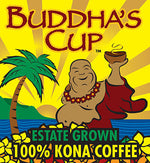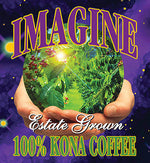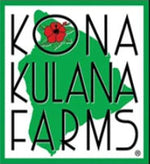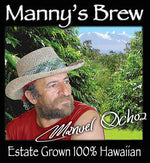A Buyer’s Guide to Kona Coffee
Have you ever heard of Kona Coffee and wondered what all the fuss was about? True authentic Kona coffee is a special type of coffee grown and processed only on the Kona district of Hawaii's Big Island, and it is famed around the world for its incredible flavor and quality. Check out this buyer's guide to Kona coffee to ensure you get to enjoy the authentic Kona coffee experience.

What is Kona Coffee?
Only coffee beans grown in the Kona district of the Big Island of Hawaii are the real deal. Unfortunately, any coffee bean blend with just 10% of Kona-sourced coffee can call itself "Kona Coffee." However, buying beans sourced from any other location proves to be nothing more than an imposter - coffee missing the unique flavor of these rare Kona beans.
The beans that brew a delicious cup of Kona coffee grow on a narrow strip of land along the slopes of the Hualalai and Mauna Loa volcanoes. The unique microclimate and bean-nourishing soil of this area of Hawaii Island produces ideal growing conditions for this crop. Morning sun with ample afternoon rain showers and tropical temperatures exist in the famous Kona Coffee Belt.
How to Identify Authentic Kona Coffee
When shopping the store shelves or browsing online, labels are difficult to trust. If it says “Kona Coffee,” it should be Kona coffee. But, as with all labels, this is not necessarily true. To purchase authentic Kona beans, you need to know the following terms.
100% Kona Coffee
Coffees labeled “Kona” may include a blend of other beans. Imported beans like Colombian and Brazilian blend with Kona beans to create a less expensive version of this rich coffee. These blends may include as little as 10 percent Kona coffee. Even the most discerning taste buds are not likely to taste the 10 percent amid the 90.
Beware of labeling which reads “Kona Roast” or “Kona Style.” These terms suggest blends. Labeling laws only require the percent of Kona coffee be listed, not other beans. Authentic Kona coffee bears the label, “100% Kona Coffee” on the packaging.
Estate-Grown Kona Coffee
Beans grown, sorted and roasted on the same Kona coffee estate or farm produce the best flavor profile. A pure tasting coffee results from “100% Estate-Grown Kona Coffee.” Hand picking the beans ensures a robust flavor, and avoids a poor taste profile
Watch out for Hawaii coffee grown outside the Kona district. Only coffee farms located in the Kona Coffee belt may claim the "100% Kona Coffee" label. Companies claiming Kona quality coffee from Maui, Kauai or other areas of the island chain fail to live up to their claims (though coffee grown in other Hawaii districts can be delicious too).
Single-Origin Kona Coffee
Much like “Estate-Grown,” “Single-Origin” or “Single-Sourced” Kona coffee means the beans are grown on one farm. The drying, roasting and packaging falls under the watchful eye of the same farmer. As a result, you get the consistent quality taste known as “Kona.”
Coffee packaged on each farm is also graded by the Hawaii Department of Agriculture (HDA). The size, shape and moisture of a bean as well as rarity effects its grade. While “extra fancy” is the highest quality coffee, the top five grades are considered high class for Kona varieties. These include fancy, number one, select and prime.
Why is Kona Coffee More Expensive?
The primary reason for the expensive price tag on 100% Kona coffee is its rarity. This world-class coffee comes at a higher cost due to the following reasons:
- Kona coffee accounts for only one percent of the world’s coffee supply.
- Ideal growing conditions are limited to the narrow area of land in the Kona district of Hawaii.
- Coffee cherry borer infestations threaten Kona bean crops.
- Labor costs add up as these beans are harvested manually for peak ripeness.
- Peaberry beans, a rare grade of coffee only available from the coffee farm that grew it, comes at a steeper cost, no matter its origin
The price of Kona coffee steers some coffee consumers toward blends. However, the cost of pure Kona proves worth the added expense. As might seem obvious, the taste of 100 percent Kona coffee greatly differs from 10 percent mixed with other beans.
Where to Buy 100% Kona Coffee
Besides visiting Hawaii and picking up a bag yourself, you can purchase 100% Kona coffee online, directly from the coffee farm. Delivered to your doorstep from the island of Hawaii, this delicious treat is like a taste from paradise. But, buyer beware; check the labels to ensure you get the authentic, quality Kona coffee experience.
- When shopping, look for:
- “100% Kona Coffee.”
- “Estate-Grown,” “Single-Sourced” or “Single-Origin.”
- Beans sourced from the Kona district of the Big Island.
Avoid coffee with the following labels:
- “Kona Roast” or “Kona Blend.”
- Beans sourced outside the Kona district.
- Low HDA grades of Kona coffee.
Whether you've visited Hawaii or not, treat yourself to a cup of authentic Kona coffee. The experience is enough to bring the relaxed nature of Hawaii mornings to your kitchen.
Visit our store to discover our five Kona coffee brands of single-origin, 100% Kona coffee to experience the rare pleasure of this unique coffee.









